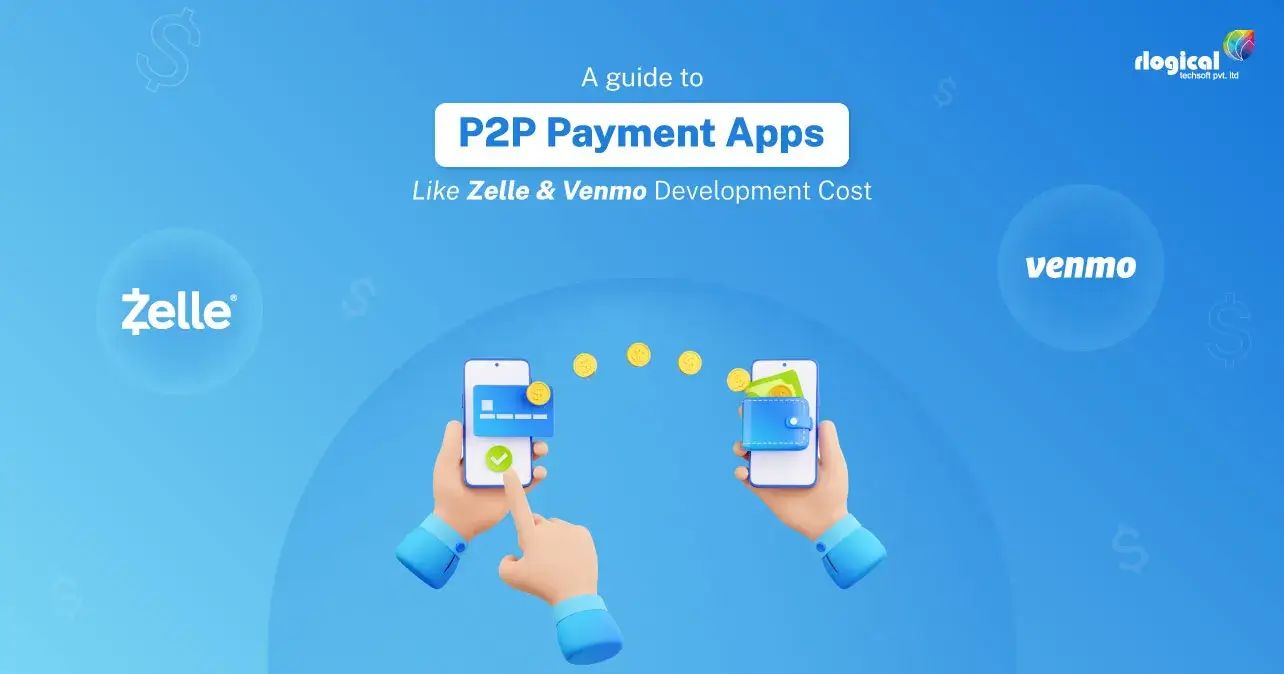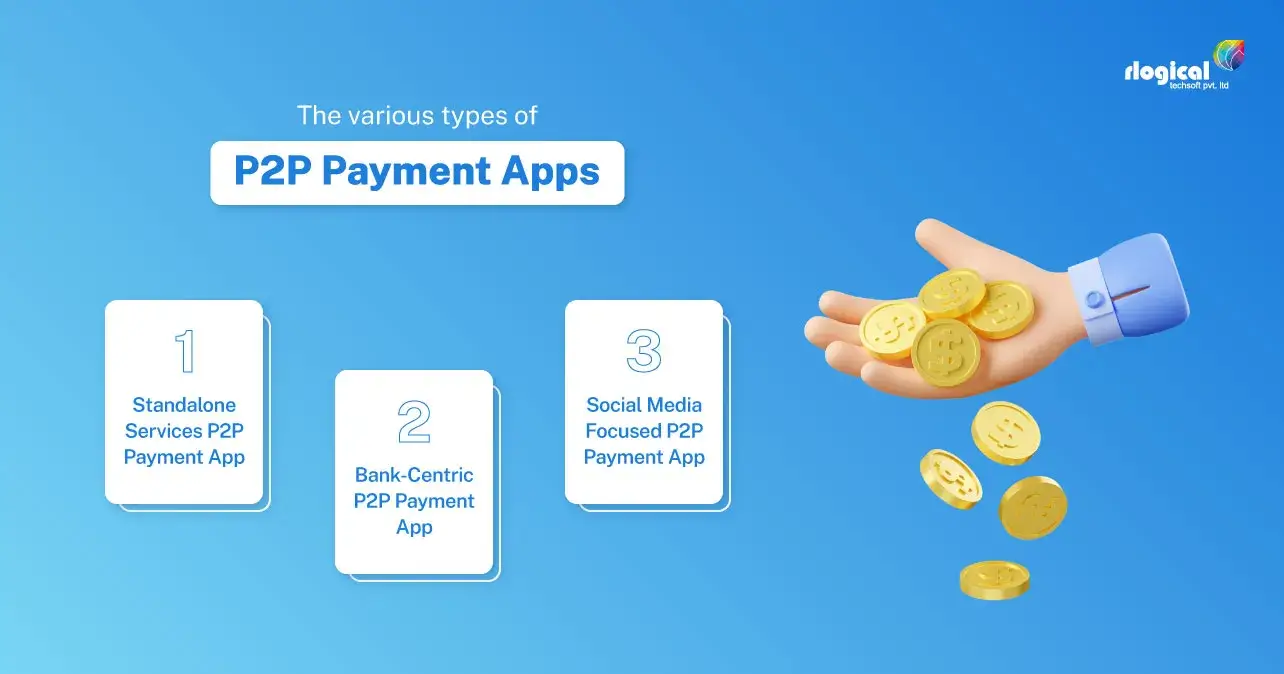
Several forms of payment have benefited from the widespread popularity of mobile devices. We now all have a digital wallet linked to our bank accounts. With just a click, we can buy anything, big or small. No wonder these apps are so popular; however, what if you could simply pay using mobile phone numbers? These applications are not all-purpose players.
Entrepreneurs are currently planning the development of such payment apps, particularly those that enable mobile phone payment. These peer-to-peer payment apps have gained popularity and generated significant revenue recently. Continue reading this blog if you want to invest in the profitable P2P payment app development concept.
Due to their high demand, the expenses of hiring a Venmo or Zelle, such as a P2P Payment mobile app development company, also affect the cost of creating a P2P app. Developing peer-to-peer payment apps is costly and requires much knowledge and experience. As a result, the features that will include will determine the starting price of a peer-to-peer payment app like Venmo. The number of mobile application developers, team size, and hiring location affects development costs.
What Are The Various Types Of P2P Payment Apps?

1. Standalone Services P2P Payment App
The mechanism for storing and handling money in these online payment applications is independent of any financial institution. They don’t use banks; instead, they have features in their wallets that let users keep their money safe before passing it on to friends or putting it in another bank account.
2. Bank-Centric P2P Payment App
The term “bank-centric peer-to-peer payment app” refers to a peer-to-peer application that includes banks as a participant in the transaction. The app takes money from the client’s bank account and deposits it directly there, not into any other account that has already held it.
3. Social Media-Focused P2P Payment App
The social media giants developed the following type of P2P payment app to make transactions more straightforward. Messenger, Facebook’s payment app, was released in 2015, allowing users to send and receive money by entering their bank information.
Read More: How to Create Mobile Banking App: [A Complete Expert Guide]
What Essential Features Does A P2P Payment Application Possess?
1. E-Wallet Or Digital Wallet
Data is put away in the cloud, and you have the office to get to it with your id and secret phrase from any place at some random time. Only you have to keep a certain must-have amount in your digital wallet. A critical feature of peer-to-peer payment apps is the ability to store bank cards in a separate location within the app. It makes it simple and convenient for users to conduct transactions with just a few clicks. Therefore, for a better user experience, always include this feature in your peer-to-peer payment.
2. Money Transfer Via Mobile Phone
If you want to rank higher than your rivals, the essential feature to include is With this feature users can simply use their mobile number to conduct transactions. The registration process requires your mobile number, which you can use to send or receive money from your bank account.
3. Real-Time Payments
Platforms enabling real-time payments, such as Venmo and Zelle, are called payment rails. They start, clear, and settle in a matter of seconds, that is, they are real-time or very close to it.
4. Payment History
Users must be able to view a summary of all their previous P2P payment transactions using the application’s feature.
5. Send Invoices And Bills
Users must be able to scan bills for people who need to pay them with a feature. The statements and invoices are essential for proving the transactions everywhere. Each of us encounters situations in which we require specific transaction details from time to time. Recalling the payment app and locating the payment details are all we do. The user frequently becomes frustrated as a result of the process’s complexity.
6. OTP Or Unique ID
Before beginning any transactions, you must register the application with a unique ID or OTP. One of the most straightforward yet efficient security payment methods is OTP. You might have been asked to share your OTP while paying or on the shopping site. The app-based transaction is successful when it uses a temporary password valid for five to ten minutes, and developers can also add a fingerprint to make it more secure.
7. Conversions And Exchange Rates
The values of different currencies and currencies vary from country to country. Additionally, we must change our money whenever we want to conduct business in another country. Yes, we can go to money changers, but we can also do the same online.
If you can provide application facilities, people won’t have to rush to the currency exchange center each time they land in a new country. This is a much safer and quicker option. Different currencies can be exchanged between debit and credit cards by users.
8. Push Notifications
The quickest method for informing users about the payment is via push notification. For instance, anyone can make a money request through an app that will notify you. Money can be transferred quickly and easily. It can also send reminders for payments like mobile phone bills and water bills. Also, it will notify you of your upcoming bill, which you can pay by the due date.
9. Transfer Amount To The Bank
Users generally appreciate it when a peer-to-peer payment application allows them to transfer funds to a bank account.
10. Chatbots And Support For Customers
Customer service is the most important thing for any service provider. Customer satisfaction rises, and customers return when questions are answered promptly. Implementing virtual assistants can ensure the user’s safety and save the existing user visit details. Users might want answers to a few questions before making a necessary purchase. The most reliable customer support technology for your P2P payment app is a chatbot, offering real-time assistance and keeping users engaged.
11. Payments In Cryptocurrencies
The most popular technology on the market today is cryptocurrency. It is a digital currency that can use to make online purchases. Including this cutting-edge feature might be good for your company.
12. Admin Panel
The admin panel is the essential part of any app that controls the app as a whole. It will oversee your entire application, allowing you to modify, add, or remove any feature. However, the purpose of this feature is to simplify app operations for app owners.
13. Application Integration
Allow for seamless payments by integrating with other apps, such as those for food delivery and ride-sharing.
14. Payment Limit
Limit the amount of money transferred daily and per transaction.
15. Requests For Payments
Allow users to request money from people who owe them and send payment requests to friends and family.
16. In-App Messages
During transactions, use the app to chat with friends.
17. Split Payments
This feature can be used for Splitting payments for shared costs like bills, meals, and rent.
These are just a few features that could add to a peer payment application like Zelle or Venmo. P2P payment apps are becoming increasingly popular among apps today. Additionally, native applications are favored worldwide. Compared to other applications, native applications are more familiar to users.
Read More: How Do Payment Apps Work?
How Much Will It Cost To Make A P2P Payment Application?
Since you are just starting, you might need an estimated cost. P2P payment apps differ from company to company. Each company doesn’t need to select the same app type. Some individuals prefer social-media-centric apps, while others prefer the standalone service app. Together these factors result in diversified app development timelines and costs. The estimation and research phase of the development process begins with collecting all information and formulating the app concept by the development team. They then move on to the development phase, focusing solely on the P2P payment app development.
After the full app development, it is time to test and release it to the Google and Apple App Stores. The best application development businesses always offer post-app development support facilities for a short time. Startups can better understand the application’s essential technicalities and improve customer service. For instance,
- A Simple App with basic features will set you back between $25,000 and $35,000 over two to three months of development, whereas A Simple P2P Payment App with a third-party payment processor can cost you $30K to $40K.
- A medium app with a few advanced features can cost around $35,000 to $45,000 and take between four and seven months to develop.
- A P2P payment app with its payment mechanism can cost you around $150K to $200K.
- A complex app with advanced features costs $50,000 and takes eight to twelve months to develop.
- A P2P payment app with social media will cost $60 million to $100 million.
Conclusion
Compared to the early 1990s, it is simpler to make payments today. This digital payment is approved and recommended because it has led to paperless transactions, which are better for the environment. The world of mobile apps has been abuzz with P2P payment applications. Having your P2P payment application can offer your business a competitive advantage in the market if you are a part of the fintech industry.
You can get high-quality and efficient mobile application development by reading this blog. To develop P2P Payment apps, app development service companies should include various essential features that ensure the success of their applications to create applications that facilitate P2P payments.
It is nearly impossible to survive on the market today without these features. The cost of developing a peer-to-peer payment platform like Venmo or Zelle depends on several factors, including the team’s size and level of expertise, the kind of services they offer, and their location.
Rahul Panchal
Rahul Panchal is the Founder & Managing Director at Rlogical Techsoft Pvt. Ltd. He is a pioneer tech enthusiast who has assisted diverse enterprise solutions with a fresh perspective over the years. From integrating technologies like Full-Stack, .NET, Flutter & PHP, he has harnessed custom web or hybrid mobile app development projects. His creative outlook on the latest models of AI, ML, blockchain, and IoT, has made various businesses attain leading-edge success.
Related Blog
- Progressive Web App Development Cost: Accurate Figures Guide
- Top Hybrid App Development Frameworks to Capture 2025 Trends For Your Business
- How Much Does MVP Cost: Factors Influence MVP Development Budget & its Reduction Tips
- Progressive Web App Benefits for Your Business Growth in Future Market
- Flutter for Web App Development: The Cross-Platform Companion For Your Business
Categories
- All
- AI Development Services
- Amazon Web Services (AWS)
- ASP.Net Development
- Azure Web App
- Big Data Analytic
- Customize
- Digital Marketing
- Drupal Development
- E-commerce web development
- Education Mobile App Development
- Enterprise Application
- Event Management App Development
- Fintech
- Fitness App Development
- Food Delievery
- Front-End Development
- Grocery App Development
- Healthcare App Development
- Hire Dedicated Developers
- Hotel Booking App
- IT Industry
- JavaScript Development
- Mobile App Development
- On Demand App Development
- On Demand Healthcare App Development
- PHP Development
- POS Software Development
- Real Estate Mobile App Development
- Retail Business App Development
- Salesforce
- Social Media Development
- Software Development
- Technology
- Transportation App Development
- UI/UX Design
- Web Design
- Web Development
- Web Services
- Web/Data Scraping Services
- WordPress




 Rahul Panchal in Mobile App Development
Rahul Panchal in Mobile App Development 





